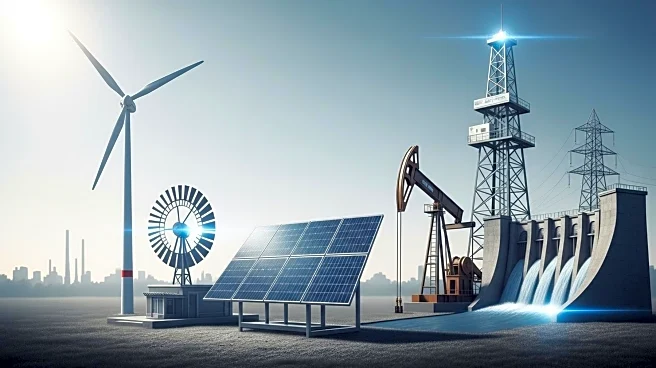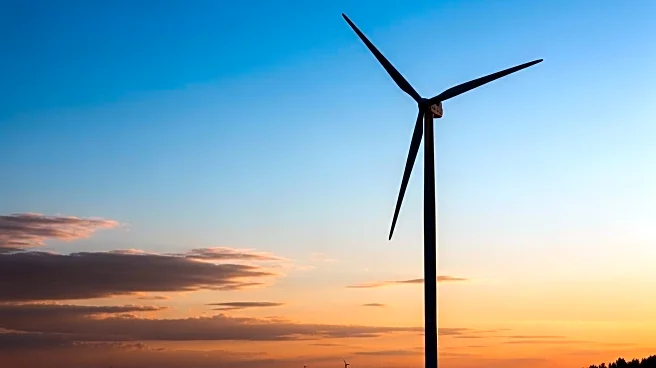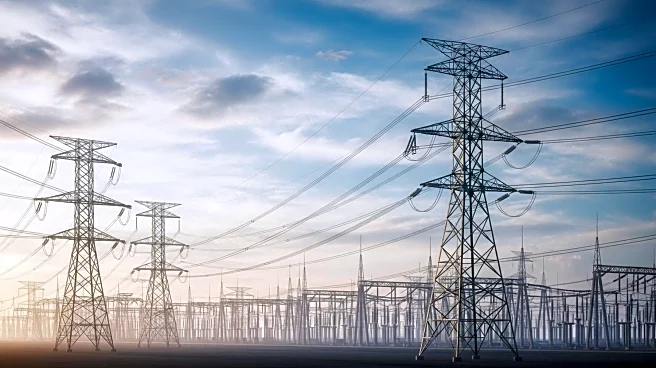What's Happening?
The U.S. energy sector is undergoing a significant transformation as it adapts to the increasing demands of an AI-driven economy. Traditional measures of energy dominance, such as oil and gas, are being supplemented by a diverse mix of energy sources including solar, wind, nuclear, hydrogen, and storage solutions. This shift is driven by the need to support the growing electricity demands from data centers, electric vehicles, and other digital infrastructure. The call for a diverse energy mix is not just ideological but rooted in national interest, aiming to secure energy independence and resilience. Clean energy sources are highlighted for their homegrown nature, resilience, economic benefits, and export potential, positioning the U.S. as a leader in the global energy transition.
Why It's Important?
The transition to a diverse energy mix is crucial for maintaining U.S. economic and national strength in the face of rising global competition. As AI and digital infrastructure drive new electricity demands, the nation that successfully builds the infrastructure for this economy will lead globally. Clean energy sources offer strategic advantages, such as reducing reliance on foreign-controlled components, particularly from China, which dominates the production of solar panels and batteries. By investing in domestic manufacturing, mining, and refining, the U.S. can mitigate strategic vulnerabilities and enhance its energy security. This transition also promises economic benefits, including job creation and the potential for the U.S. to export next-generation energy technologies.
What's Next?
To secure its energy future, the U.S. must focus on building a modern, cyber-resilient grid capable of supporting high-capacity transmission. This involves speeding up permitting processes while ensuring safety and property protection. Additionally, strengthening alliances to diversify global supply chains and supporting innovation across energy technologies are critical steps. The U.S. aims to lead the intelligent age by investing in infrastructure and independence, similar to its leadership during the industrial age.
Beyond the Headlines
The shift towards a diverse energy mix has broader implications beyond immediate economic and security benefits. It represents a cultural and ethical commitment to sustainability and environmental stewardship. By reducing reliance on fossil fuels and embracing clean energy, the U.S. can address climate change challenges while promoting global leadership in sustainable practices. This transition also reflects a long-term shift in how energy is perceived and utilized, emphasizing the importance of innovation and adaptability in meeting future demands.












